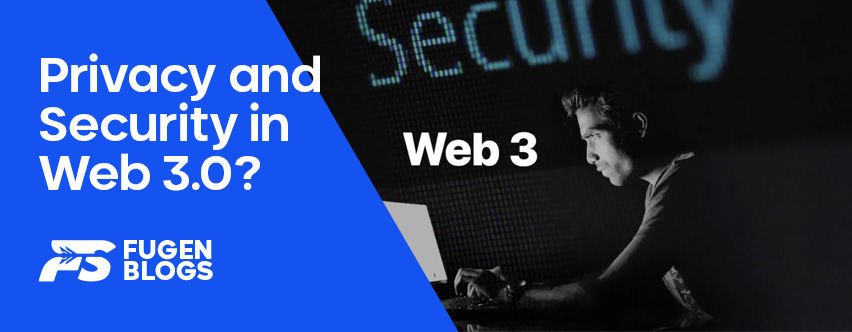The evolution of the internet has brought us to Web 3.0, a new phase characterized by enhanced interactivity and decentralization. While this advancement opens up exciting possibilities, it also raises concerns about privacy and security. In this blog, we will delve into the importance of privacy and security in Web 3.0, exploring the new standard that must be set to protect users in this increasingly connected digital era.
Table of Contents
Understanding Web 3.0:
Web 3.0, also known as the semantic web, goes beyond the static web pages of its predecessors. It involves dynamic, personalized content driven by AI algorithms and decentralized systems powered by blockchain technology. This new era aims to create a more intelligent and user-centric internet experience, but it also introduces unique privacy and security challenges.
The Importance of Privacy in Web 3.0:
- Data Ownership: In Web 3.0, users have more control over their data. They can choose to share specific data with applications and services without surrendering all their personal information.
- Decentralization: Web 3.0 operates on decentralized networks, reducing the risk of centralized data breaches and unauthorized access to user information.
- Enhanced Encryption: Web 3.0 employs stronger encryption methods, making it harder for malicious actors to intercept and misuse sensitive data.
The Significance of Security in Web 3.0:
- Smart Contracts: Web 3.0 relies on smart contracts to facilitate secure transactions. However, vulnerabilities in smart contracts can lead to financial losses and exploitation.
- Identity Protection: With more user-centric data handling, Web 3.0 must ensure robust identity protection to prevent identity theft and fraudulent activities.
- DApp Security: Decentralized applications (DApps) are central to Web 3.0, and securing these applications against cyber threats is critical to maintaining user trust.
Comparison Table: Web 2.0 vs. Web 3.0 in Terms of Privacy and Security
| Aspect | Web 2.0 | Web 3.0 |
|---|---|---|
| Data Ownership | User data controlled by centralized entities | Users have more control over their data |
| Security | Relies on traditional security measures | Embraces blockchain-based security |
| Identity Protection | Basic identity protection | Enhanced identity protection |
| Data Sharing | Extensive data sharing with minimal control | Selective data sharing with users’ consent |
Stats on Web 3.0 Privacy and Security Concerns:
- According to a survey by Norton LifeLock, over 65% of consumers are concerned about their privacy and security when using Web 3.0 applications.
- A report by Deloitte indicates that over 40% of companies plan to invest significantly in Web 3.0 security measures in the next year.
FAQs:
Q: Can blockchain technology guarantee complete security in Web 3.0?
A: While blockchain technology provides enhanced security through decentralization and encryption, it is not immune to all forms of cyber threats. Additional security measures are still necessary to safeguard user data.
Q: How can users protect their privacy in Web 3.0?
A: Users can protect their privacy by being cautious about sharing personal information, opting for strong authentication methods, and using virtual private networks (VPNs) when accessing decentralized networks.
Q: Will Web 3.0 eliminate all data breaches and cyber threats?
A: While Web 3.0 introduces significant advancements in security, it cannot guarantee the complete elimination of data breaches and cyber threats. Continuous efforts and innovation will be necessary to stay ahead of emerging threats.
Conclusion:
As we step into the era of Web 3.0, privacy and security become paramount concerns that demand a new standard of protection. With users gaining more control over their data and the integration of blockchain technology, Web 3.0 offers promising advancements in safeguarding user privacy and securing digital transactions. However, it is essential for users, developers, and organizations to remain vigilant and proactive in implementing robust security measures. By embracing the new standard of privacy and security in Web 3.0, we can foster a safer and more trustworthy digital environment for all users.


Leave a Reply